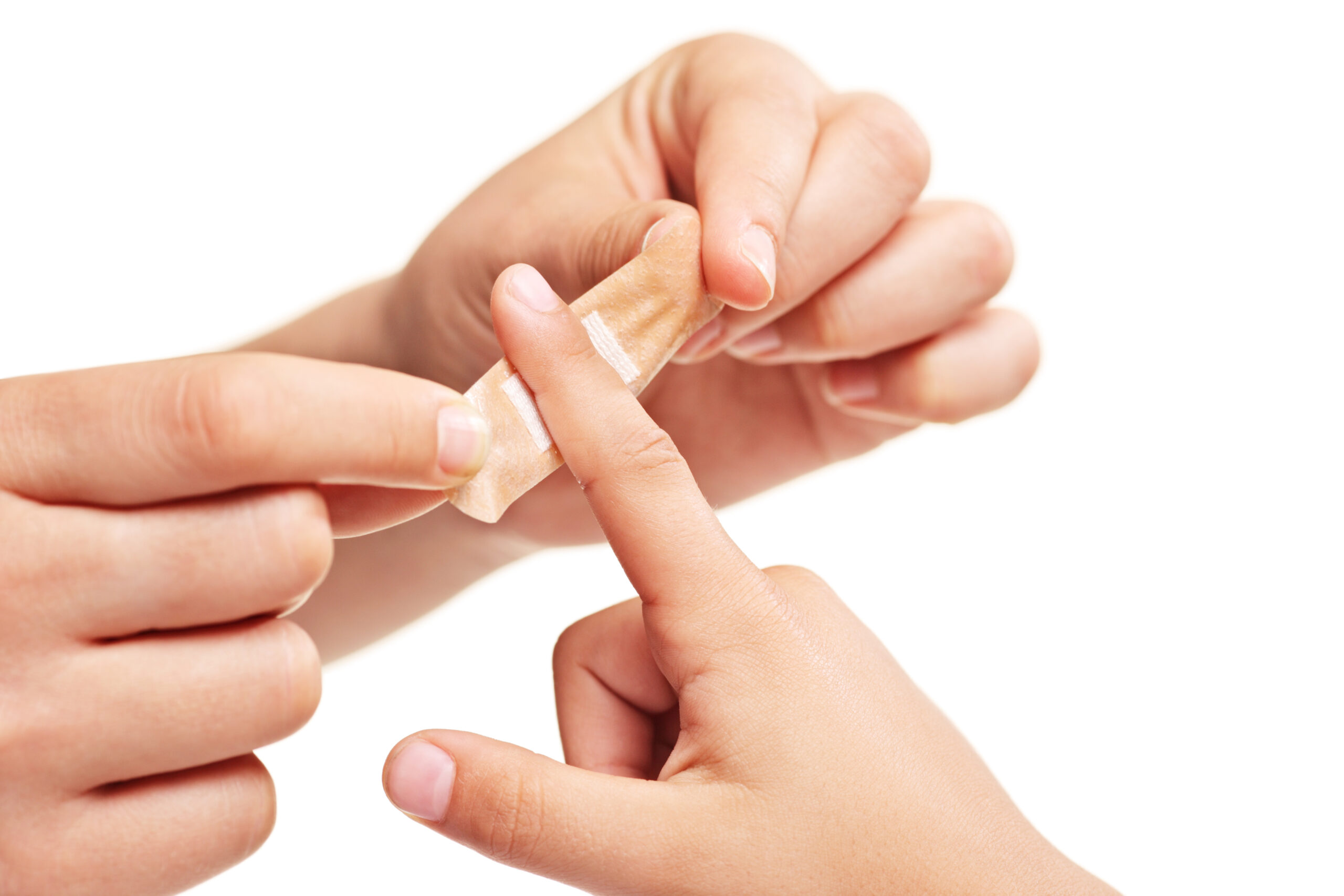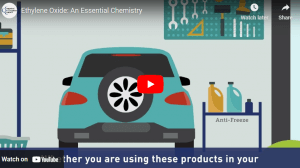Key Points/Overview
EO is most commonly used in the production of other chemicals and products, including solvents, antifreeze, detergents, adhesives, polyurethane foams and pharmaceuticals.
An important use of EO is the sterilization of medical equipment, including personal protective equipment used by health care professionals and hospitals. It is estimated that ethylene oxide sterilizes 20 billion medical devices each year, helping to prevent disease and infection.
EPA standards for EO production and use require emission reducing and monitoring devices, on-site testing, site-specific operating parameters, and regular reporting and record keeping. Facilities where EO is produced work to meet and exceed EPA standards.
In workplaces where EO is present, the OSHA standard applies in many circumstances and requires employers to monitor employee exposure and provide appropriate protective clothing and equipment to employees who may be exposed to EO.
There is minimal health risk for the general population because most people are not exposed to significant quantities of EO.
Ethylene Oxide Sterilization
A small but important use of ethylene oxide is the sterilization of medical equipment, including the sterilization of personal protective equipment used by doctors and hospitals across the country. It is estimated that ethylene oxide sterilizes 20 billion medical devices each year, helping to prevent disease and infection.1 The sterilization process is tightly controlled, and the ethylene oxide gas is removed from the products before they are used. According to the U.S. Food and Drug Administration (FDA), “These standards help ensure levels of ethylene oxide on medical devices are within safe limits.”2
Read about more ethylene oxide uses.

Electric Batteries
One use of ethylene oxide is in the development of lithium-ion batteries, a key power source for electric vehicles. Ethylene oxide is used to produce ethylene carbonate, which is used in lithium-ion batteries to allow the electricity generated to travel more easily through the battery. See the infographic.

Agriculture
Ethylene oxide and its derivatives are utilized to produce a wide variety of active and inert ingredients, used in insecticides, pesticides, and herbicides. Each active ingredient targets specific needs for the agricultural industry – helping to protect crops and boost crop production.
In processing agricultural crops, demulsifers based on ethylene oxide are employed to improve the separation of oil from water, such as in corn oil extraction in the bioethanol process. This oil can be used in the food chain, animal feed supply, or made into biodiesel.
Ethylene oxide is used to produce industrial starches from agricultural materials (hydroxyethyl starches) which are a versatile input used in many industries, including adhesive and binding applications and paper making (printing and coating). Industrial starch can also be used in laundry starch. Further, in veterinary and animal surgical facilities, ethylene oxide is used to sterilize medical devices, procedure kits, surgical trays, and surgical instruments. See the infographic.

Oil and Gas
Ethylene oxide derivatives are used in natural gas purification to reduce corrosion and scale in oil and gas processing, oil well remediation, enhanced oil recovery aids, freeze protection for finished goods, gas dehydration, and carbon capture in gas processing, which ultimately helps enable the energy transition.
A family of its derivatives — ethanolamines are used to allow for cleaner burning fuels resulting in less air pollution. Common ethanolamines include monoethanolamine (MEA), diethanolamine (DEA), and triethanolamine (TEA). By using ethylene oxide-based compounds, petroleum production speed has increased from the well head to the refinery while reducing corrosion in the pipelines. This helps to lower the overall cost of petroleum products and reduce the frequency of replacing equipment and pipelines. See the infographic.

Product and Industrial Applications
Ethylene oxide is used as an intermediate in the production of other chemicals used to manufacture products, such as fabrics for clothes, upholstery, carpet, and pillows. It is used to produce ethylene glycols for engine antifreeze that keeps our automobiles performing.
Ethylene glycol is used to manufacture fiberglass used in products ranging from jet skis to bathtubs to bowling balls, as well as polyethylene terephthalate (PET) plastic resin to make beverage containers and packaging film.
Other ethylene oxide derivatives are used in household cleaners and personal care items such as cosmetics and shampoos, Other items include industrial cleaners, heat transfer liquids, polyurethanes, and plasticizers.

Construction
Ethylene oxide plays an important role in processing resources such as minerals into usable products. Building and construction products such as asphalt, cement, solvents, and wood treatments are manufactured from other chemical-based products that use ethylene oxide.

Medical Applications
Ethylene oxide sterilization processes can sanitize medical and pharmaceutical products that cannot support conventional, high-temperature steam sterilization procedures. Medical devices that require ethylene oxide sterilization include heart valves, pacemakers, surgical kits, gowns, drapes, ventilators, syringes, and catheters.
Approximately 50 percent of medical supplies are sterilized with ethylene oxide, making it critical to the U.S. healthcare industry. Ethylene oxide has been used for sterilizing spinal anesthesia and equipment for intravenous infusions along with other healthcare products, such as bandages and ointments, reducing potential damage to the product that may occur from other means of sterilization.
Ethylene oxide derivatives may also be used in manufacturing polyester and polyester to make personal protective equipment such as polyethylene terephthalate (PET) multiple-use surgical gowns and masks. See the infographic.

Cleaning
A major role of ethylene oxide is in the production of surfactants and emulsifiers used for cleaning and disinfecting. These surfactants are key ingredients in many cleaners used in hospitals, cafeterias, hotels, and restaurants. EO-based surfactants are also used for transportation cleaning for cars, planes, and trains.
Ethanolamines are a family of ethylene oxide derivatives that work as ingredients in cleaning and personal care products, such as soaps, laundry detergents, surface cleaners, creams, and disinfecting products.
Other ethylene oxide derivatives include alcohol ethoxylates, alcohol ether sulfates, and polyethylene glycols. They are key active ingredients in most cleaning products in home care such as all-purpose cleaners, glass/window care cleaners, laundry detergents, hard surface cleaners, dishwashing detergents, degreasers, floor polishes, and stain removers. See the infographic.

Safety Information
Ethylene Oxide Exposure
Any potential association between ethylene oxide and cancer is linked only to chronic exposure. There is minimal health risk for the general population because most people are not exposed to significant quantities of ethylene oxide.
The Occupational Safety and Health Administration’s (OSHA) ethylene oxide standard requires employers where ethylene oxide is present in the workplace to monitor employee exposure.5 Under the OSHA standard, employers must provide appropriate protective clothing and equipment to employees who may be exposed to ethylene oxide. The National Institute of Occupational Safety and Health6 and the American Conference of Governmental Industrial Hygienists7 also provide guidance for industrial exposure to ethylene oxide.
Regulations
Industrial sources of ethylene oxide emissions to the atmosphere are regulated under EPA’s National Emission Standards for Hazardous Air Pollutants (NESHAP) rules.8 These standards require, among other things, installation of control devices to reduce emissions, emissions monitoring, performance testing, site-specific operating parameters, and continued reporting and recordkeeping.
Additionally, companies that make and work with ethylene oxide invest in research and product stewardship technologies so that they can continue to help protect communities, with advanced technologies to track and manage emissions. Manufacturers also share best practices for responsibly producing, shipping, and handling ethylene oxide.
Sources
- AdvaMed: https://www.advamed.org/industry-updates/hot-topics/sterilization-ethylene-oxide/
- FDA – https://www.fda.gov/medical-devices/general-hospital-devices-and-supplies/ethylene-oxide-sterilization-medical-devices
- CDC – Disinfection and Sterilization: https://www.cdc.gov/infectioncontrol/guidelines/disinfection/index.html
- FDA – https://www.fda.gov/news-events/press-announcements/statement-concerns-medical-device-availability-due-certain-sterilization-facility-closures
- OSHA – Occupational Safety and Health Administration’s (OSHA) ethylene oxide standard
- NIOSH – https://www.cdc.gov/niosh/npg/npgd0275.html
- American Conference of Governmental Industrial Hygienist – https://www.acgih.org/
- EPA – EPA’s National Emission Standards for Hazardous Air Pollutants (NESHAP)
- Research Gate – https://www.researchgate.net/publication/24415937_Mortality_Study_Update_of_Ethylene_Oxide_Workers_in_Chemical_Manufacturing_A_15_Year_Update
- Fox News West Michigan – https://www.fox17online.com/2019/07/24/state-no-unusual-cancer-stats-near-grand-rapids-medical-manufacturer/



